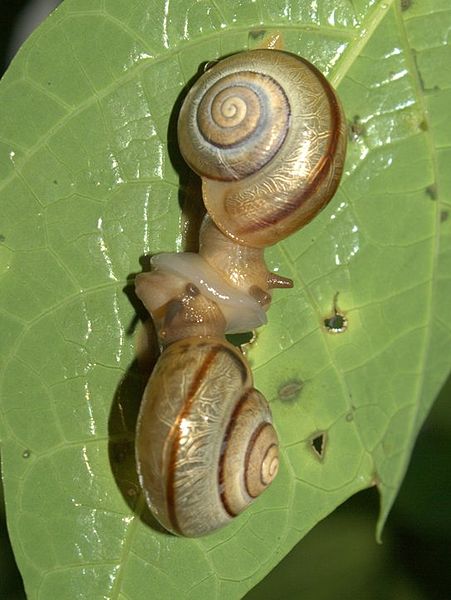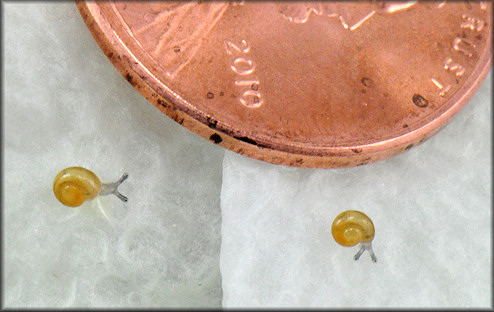Reproduction
Polygyra cereolus like all gastropods in subclass Pulmonata are monoecious, meaning they contain both male and female sex organs (Hickman et al, 2011). According to Ken Hotopp and Tim Pearce of the Carnegie Museum of Natural History eggs and sperm are created in the gonad of the snail. A spermatophore is a packet of sperm that is created and is transferred from donor penis to receiver vagina. Sperm are released from the spermatophore once inside the receiving snail and travel to the fertilization chamber where eggs are held. This is where the genetic material of both snails are combined (Hotopp and Pearce, 2006).
Mating Behavior
The courtship process in terrestrial gastropods range in the time they span and
in the behavior exhibited during the process (Tompa, Verdonk, Van Den Biggelaar, 1984). They
prefer to mate at night but have been found to mate during the day if conditions
are right, such as rain which increases mating (Tompa, Verdonk, Van Den
Biggelaar, 1984). Snails sight is not the most developed and they also have an
affinity for dark, moist environments, which forces them to use other methods to
find mates (Hotopp and Pearce, 2006). They rely on chemorecepters found in their
antennae as well as their sense of touch to identify a suitable mate (Hotopp and
Pearce, 2006). Using mucus pores some snails will follow another via their mucus
trail and even ingest a released mucous globule (Tompa, Verdonk,
Van Den Biggelaar, 1984). When they do find their mate, they perform a crawling
"dance" that sometimes can be in a clockwise, ever-closing circular pattern that will not
be successful if performed counter-clockwise (Tompa, Verdonk, Van Den Biggelaar,
1984).
Photos by Jeff Schroeder



